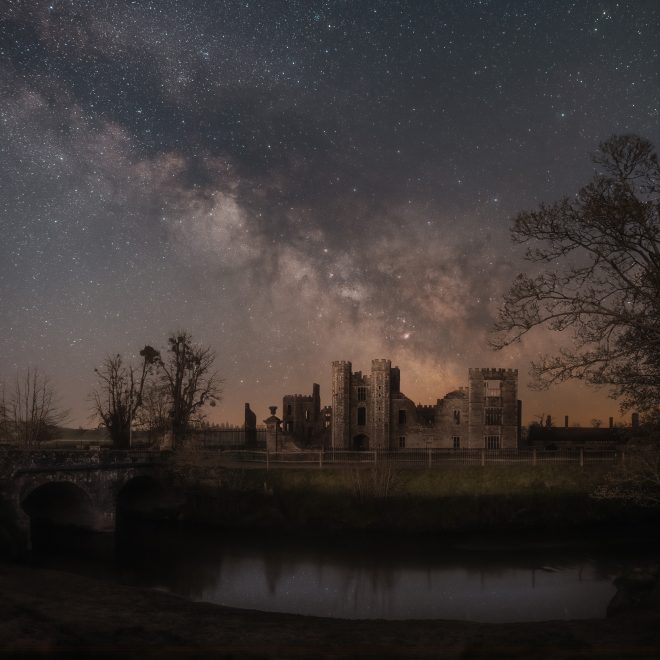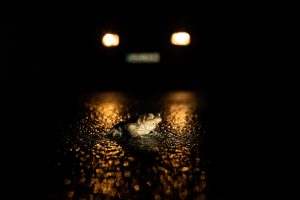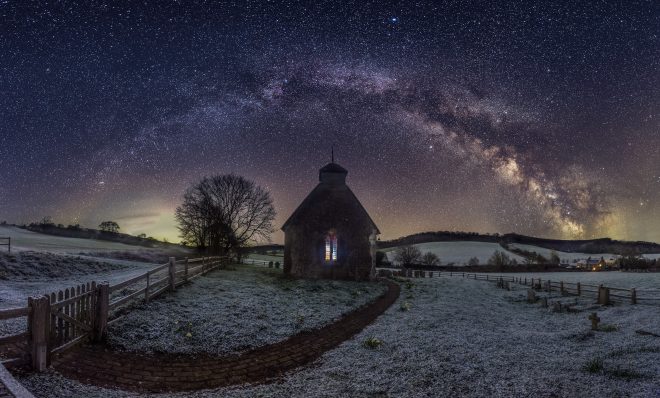Embrace the darkness and win £100 as South Downs cosmic competition returns
November 1, 2023

The National Park’s popular astrophotography competition returns for its fourth year and is challenging people to capture a dazzling view of the night sky.
As the clocks go back, days are shorter for exploring the National Park, but the night-time offers its own celestial charms.
Look up on a clear night and you’ll be treated to one of the best views of the stars anywhere in England. The South Downs National Park is one of only 21 International Dark Sky Reserves in the world because of its particularly “dark” spots away from light pollution, with other reserves including Idaho, USA, and the River Murray in Australia.
This year photographers have the chance of winning up to £100 for a breathtaking image in one of the following three categories:
South Downs Starry Skyscapes – Can you capture a dramatic star-studded photograph of the landscape showing the cosmos above it?
Nature At Night – Can you capture an amazing shot of living things in the National Park? This could include wildlife, people, trees, plants or fungi!
Magnificent Moon – Can you capture an amazing image of the moon above the South Downs landscape? Images of the moon should be alongside the landscape, buildings, towns, villages, cultural heritage or people in the South Downs.
The runner-up prize in each category will be £50 and all submitted images must be taken within the South Downs National Park.
A selection of photos submitted in the contest will be shared throughout the National Park’s Dark Skies Festival, which will take place from 10 to 18 February. The theme of the festival this year will be about protecting our precious dark skies and an exciting line-up of events and activities will be announced in the New Year.

Judging the contest will be “Dark Skies” Dan Oakley, an expert on the South Downs International Dark Sky Reserve, astrophysicist and the National Park’s Events Assistant Elinor Newman, and Steve Broadbent, Chairman of Hampshire Astronomical Group.
Dan said: “The autumn and winter are the perfect time to go out and stargaze in the South Downs National Park – just make sure you pack something warm to wear and a hot drink! It’s always worth checking the weather forecast as you’ll see the most when cloud cover is minimal.
“To many people’s surprise, the South Downs is actually one of the best places to stargaze in the world and it’s quite amazing when you consider how close we are to busy light-filled urban locations such as London, Brighton, Portsmouth, Southampton and Farnham.
“We have 10 Dark Sky Discovery sites in the National Park and they are the perfect spots for stargazing, whether you’re a seasoned astrophotographer or trying it out for the first time. You’ll be amazed at just how much you can see with just the naked eye!”
Jan Knowlson, Biodiversity Officer for the National Park, added: “While humans are diurnal, so many animals are nocturnal and live on a completely different time cycle. Around two thirds of all wildlife is most active at night, so having those dark skies with low light pollution and a clear shift from day into night is very important. In the South Downs countryside and gardens you may be lucky enough to spot foxes, owls, bats, hedgehogs and moths. We’ve even had a crab submitted to our Nature at Night category!”
The deadline for entries to the competition is midnight on Friday, 12 January 2024.
Details of the Dark Sky Discovery Sites can be found at www.southdowns.gov.uk/dark-night-skies/where-to-stargaze.
For entry details and to download an application form visit www.southdowns.gov.uk/AstroPhotoComp
Here are some top tips to help you make the most of stargazing in the South Downs:
- Check the phase of the moon to plan your trip – stargazing is best before a full moon
- Take a blanket or mat to lie on
- Wrap up warm
- Take some snacks and a hot drink
- Take a compass or use the one on your smart phone
- Download a star gazing app to help you identify constellations and stars
- Allow time for your eyes to adjust – this takes around 20 minutes so turn off any lights, torches and preferably put your mobile phone away (at least when not taking pictures if you are using it to photograph)
- Leave no trace – remember to take any rubbish home with you.

